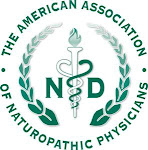2009 AANP Physician of the Year
Photo by US Army Africa via Flickr, used under the Creative Commons License.
I’ve been out of the office for a few days, and was way too busy catching up on all of the countless things which don’t get done when you’re not there attending to them. So perhaps I can be forgiven for not seeing it immediately. But, at the end of the day, there it was in my Inbox, leering at me, daring me to open it up. “Selenium Does Not Benefit -- and May Harm -- Most Patients With Non-Small-Cell Lung Cancer.” What? Not again… Yet another study showing that antioxidants may do more harm than good. First it was beta-carotene. Then vitamin E. Now selenium. And that’s just the antioxidants. To top it off, the reason I was out of the office last week was that I was attending the National Advisory Council for Complementary and Alternative Medicine, the advisory body to NIH’s NCCAM. On that council, we have talked about just this issue – why do therapies which seem to make biological and physiological sense, which have some epidemiologic data to support their use, and which naturopathic physicians (and other alternatively-minded practitioners) have been using for decades (or much longer), seem to fail in double blind, randomized clinical trials?
The reasons are multiple, complex, and often convoluted. And conventional medicine is all too willing to accept a negative study of a natural therapy, proclaim that “it doesn’t work,” and wash their hands of the entire mess, while leaving the public with the impression that alternative medicine isn’t really worth much. In reality, these therapies often fail in clinical trials because those trials are designed to answer simple, straightforward questions, and as anyone who has provided care to patients can attest, clinical medicine is anything but simple and straightforward. The typical randomized, placebo-controlled, double-blind study can only answer a limited set of very specific questions, and if the wrong question is being asked, or if it is being asked in the wrong patient population, the answer may be equivocal, confusing, or just plain wrong.
In the lung cancer study I saw today (J Clin Oncol 28:7s, 2010 (suppl; abstr CRA7004)), selenium actually appeared to show benefit in one sub-group – those who had never smoked. True, that finding did not reach statistical significance, but then neither did the finding of potential harm (P=0.15). But which one made the headline? You already know the answer.
And so I began to ponder the question, “What’s wrong with research?” A part of me becomes enraged at the reductionistic, allopathic, biomedical model, which breaks things down into components so small that all synergism, all interdependence is stripped away, and then declares those components to be ineffective. Another part argues that the wrong component was selected, or was a synthetic form (although in the lung cancer study, they used selenium yeast). But ultimately, I find myself becoming offended because I believe that these therapies work… Whoa! Believe? OK, but where is the role for evidence? I used to believe that stress caused gastric ulcers. And then along came Helicobacter pylori, and I had to change my belief to match the evidence.
For naturopathic medicine to survive and thrive in the 21st century climate of evidence-based medicine, I think at least three things must happen. First, we should be willing to judge ourselves critically and objectively, and subject our therapies (and ourselves) to scientific scrutiny. Scary and intimidating? Perhaps. Essential? Absolutely.
Second, we need to step up and recruit and train naturopathic physicians to be world-class researchers. We make great doctors – our patients tell us so every day. We have yet to prove that we can also make great researchers, although we have begun to lay the groundwork to create this success. We are playing catch-up with academic institutions that have a 50-60 year head start, but we have the advantages of being able to learn from their mistakes and of having a public who demands the type of care we provide. While the schools will bear much of this burden, it will require the concerted effort of the entire profession to create the infrastructure necessary to make this reality.
Third, we should collaborate with other professions and institutions to craft the research models necessary to adequately perform “whole systems” naturopathic research. There are examples of this type of approach already existing in the health systems research literature which can be adapted to our needs. In the end, we must create and validate the tools to dethrone the randomized controlled trial as the gold standard, and construct new ways to validate clinical approaches to health issues. Much as the homeopaths of 2+ centuries ago created the proving as a way to better understand and utilize their remedies, we must refuse to be limited by the way conventional medicine views health and disease.
We must boldly strike out to create the systems needed to transform both our research questions and the systems we use to generate the answers. Only then will we be able to use the tools of research to promote and defend naturopathic medicine, instead of feeling beaten over the head by them. Research as an advantage, instead of an impediment. Imagine that.





No comments:
Post a Comment